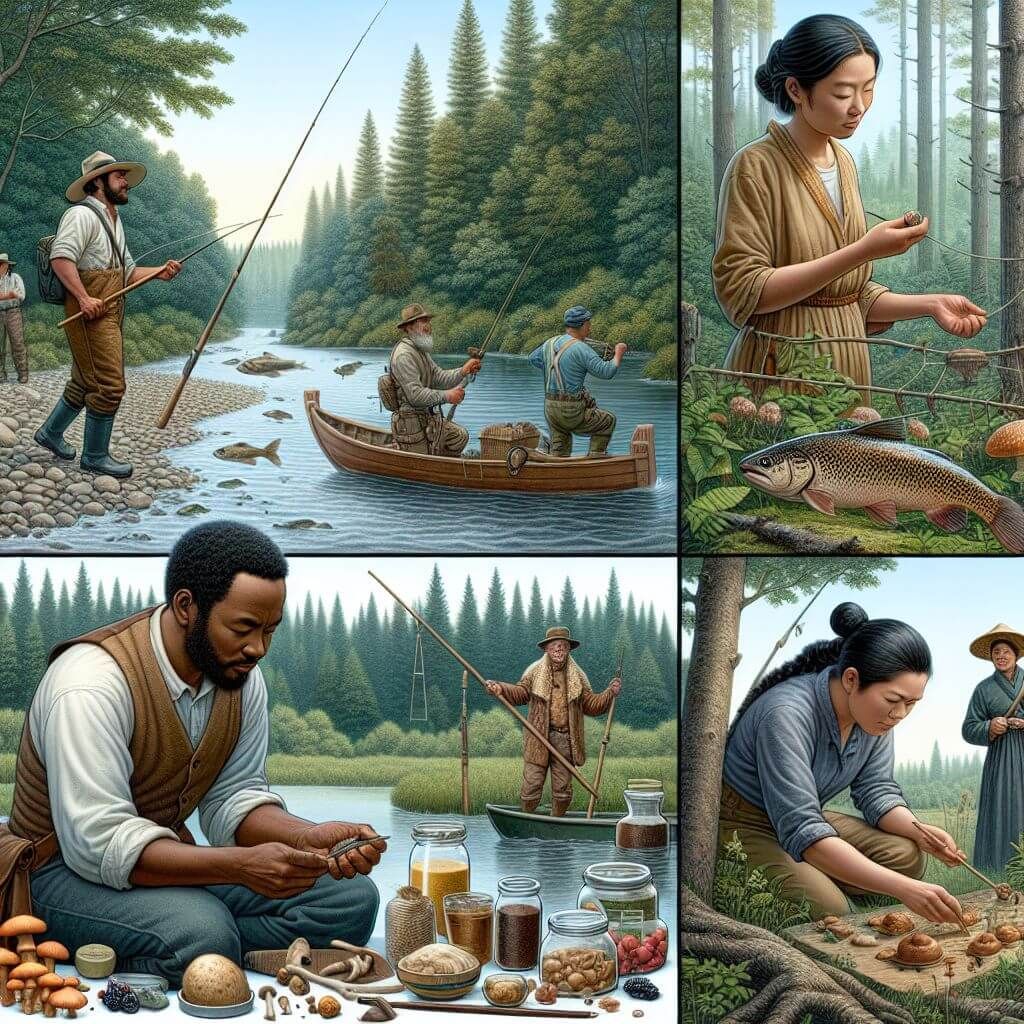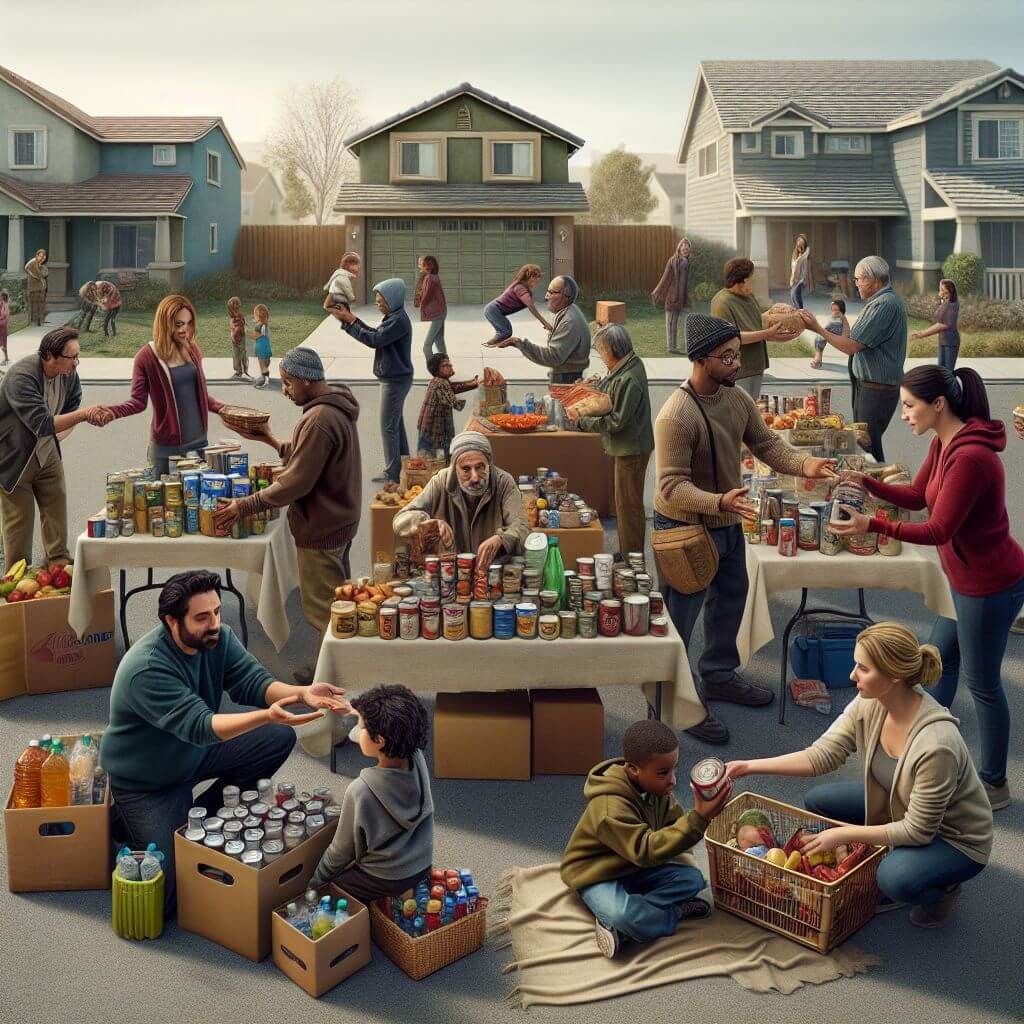
Key Takeaways
- Identify immediate food sources: check your pantry for overlooked items and understand what local plants are safe to eat.
- Plan your meals: ration non-perishable food items and create a meal schedule to extend your supplies.
- Preserve water: prioritize finding and purifying water and learn how to store it safely.
- Learn food preservation: understand simple techniques like drying and pickling to make your food last longer.
- Build a community network: know how to trade skills or items and where to find local support.
When the Pantry is Bare: Urgent Steps to Take
When you open your pantry and find it nearly empty, the first wave of panic is natural. But take a deep breath—there are immediate actions you can take to ensure your survival and comfort. First, thoroughly inspect your pantry. Often, there are overlooked items pushed to the back that can be vital. Next, remember that knowledge is your best tool. Understanding what you can safely consume from your surroundings could save you.
Finding Immediate Nourishment
When food is scarce, it’s crucial to think outside the box. Did you know dandelions are completely edible? From the leaves to the roots, this common ‘weed’ can provide vital nutrients. Before you start foraging, though, it’s essential to have a reliable guide to edible plants in your region. Look for one with clear pictures and warnings about look-alike plants that might be poisonous.
Here’s a quick tip: Pine trees are more than just a symbol of the wilderness. The inner bark, known as cambium, is edible. It can be dried and ground into flour or eaten as is in a survival situation.
Creating an Emergency Food Plan
Now, let’s talk about what you’ve got on hand. You might have more to work with than you think. Canned beans, rice, pasta—these staples can go a long way. The key is to plan your meals. By carefully rationing and scheduling your food intake, you can extend your resources. For instance, if you have a bag of rice, calculate how many servings it contains and spread them out over the upcoming days or weeks.
Maximize Your Existing Food Supply
Now that you’ve identified what you have, it’s time to get the most out of it. Remember, variety isn’t just the spice of life; it’s also a way to ensure you’re getting a range of nutrients. Mix and match your ingredients to create balanced meals. And don’t forget to use your spices—they can turn a bland meal into a morale booster.
Stretching What You Have
Stretching your food supply is about getting creative. Combine partial meals into full ones and use everything. For example, bones or vegetable scraps can be boiled to make a nutritious broth. And if you’re down to the last bits of peanut butter or jam, add hot water to the jar, shake it up, and you’ve got a flavorful drink or soup base.
Another tip is to eat smaller, more frequent meals. This can help manage hunger and make limited supplies last longer.
Innovative Cooking Methods
No power? No problem. You can build a simple solar oven using a cardboard box, aluminum foil, and plastic wrap. This is a slow-cooking method, but it’s effective and doesn’t require any fuel. If you have access to wood, a small campfire with a pot can be your kitchen. Just remember to practice fire safety, especially if you’re indoors.
Alternative Food Sources

In survival scenarios, traditional food sources may not be available, so it’s crucial to explore alternative options. Nature can provide an abundance of food if you know where to look and how to harvest it safely. Always remember to forage responsibly and sustainably, taking only what you need and leaving enough for wildlife.
Safe Foraging for Edibles
Foraging for wild edibles is an invaluable skill. Many plants that are often overlooked can be rich in nutrients and calories. For instance, acorns can be processed to remove tannins and then used to make a filling flour. However, always be 100% sure of a plant’s identification before consuming it, as some are toxic. Invest in a good field guide and consider taking a local foraging class to boost your confidence.
Introduction to Trapping and Fishing
Trapping and fishing may also become necessary skills in a long-term survival situation. Simple snares can catch small game, while fishing can be done with minimal equipment. You can fashion a fishing pole from a sturdy branch, line from your survival kit, and hooks from improvised materials like a can tab. Remember, these activities are subject to local laws, so familiarize yourself with them before you find yourself in a survival situation.
Water: The Number One Priority
Even more critical than food is water. You can survive weeks without food, but only days without water. Securing a clean water source and knowing how to purify it could mean the difference between life and death.
Identifying and Purifying Water Sources
Look for running water in streams or rivers, which is generally cleaner than stagnant water. However, always purify it before drinking. Boiling is the most reliable method, but if you can’t start a fire, consider carrying water purification tablets in your survival kit or using a portable filter. Solar disinfection is another option: fill a clear plastic bottle with water and leave it in direct sunlight for six hours to reduce pathogens.
Conservation and Storage Techniques
Once you’ve found water, conserving it is key. Don’t waste water on washing unless absolutely necessary. Collect rainwater using tarps or large leaves, and store it in clean containers. If you have the means, digging a small underground cistern can keep your water supply safe and cool.
Prolonging Food Shelf Life
Extending the shelf life of your food reserves can help you manage during shortages. There are several methods to preserve food, even without electricity.
Preservation Methods on the Go
If you’re mobile, focus on preservation methods that don’t require refrigeration. Salting meat and fish can preserve them for weeks or even months. Smoking is another traditional method that adds flavor and extends shelf life. These methods require some practice, so it’s wise to learn them before you need to rely on them.
The Basics of Canning and Drying at Home
At home, canning and drying are effective ways to preserve food. Canning can seem intimidating, but with a water bath and some jars, you can seal away a variety of foods. Drying foods is simpler; thinly sliced fruits and vegetables can be dried in the sun, in an oven on low heat, or with a dehydrator. These methods will give you a stock of ingredients that can last for months.
Building Community Support Networks

In times of scarcity, a strong community can be your greatest asset. Sharing resources and skills can help everyone get through tough times.
The Role of Barter and Trade
Money may not always be the best currency in a survival situation. Instead, consider bartering with goods or services. Maybe you have a surplus of canned tomatoes, but your neighbor has fresh eggs. Trade can benefit both parties and strengthen community bonds. Think about skills you can offer, too—repairing tools, sewing, or medical knowledge are all valuable.
Locating Nearby Assistance Programs
When all else fails, remember that you are part of a larger community that can offer support. Assistance programs are designed to help those in need, especially when food supplies run critically low.
It’s important to know how to find these resources before you’re in a pinch. Start by checking online for local food banks and community centers that offer food assistance. Many areas have emergency hotlines for food services as well.
Don’t overlook religious organizations and non-profits; they often have food pantries and soup kitchens. If you have children, check with their school, as many offer meal programs. Additionally, government programs like SNAP (Supplemental Nutrition Assistance Program) can provide relief in times of hardship.
Building a network within your community can also lead to cooperative gardening efforts or community-supported agriculture (CSA) programs, where you can receive fresh produce regularly. Knowing these options can provide not just immediate relief, but also a sustainable way to prevent future shortages.
Frequently Asked Questions (FAQ)
When facing a food shortage, many questions arise about how to cope with the situation safely and effectively. Here are some answers to common concerns.
How Can I Identify Edible Plants and Berries in the Wild?
To safely identify edible plants and berries, invest in a reliable field guide specific to your region. These guides provide detailed images and descriptions to help you distinguish edible plants from harmful ones. Also, consider taking a foraging class or workshop to gain hands-on experience.
Here’s a rule of thumb: avoid plants with white or yellow berries, thorns, or a bitter almond scent, as these can indicate toxicity. Always perform a ‘universal edibility test’ if you’re unsure about a plant, which involves small incremental taste tests over several hours to watch for any adverse reactions.
What Are Some Quick Methods to Purify Water?
Quick methods to purify water include boiling for at least one minute, using water purification tablets, or filtering through a clean cloth followed by a portable water filter. You can also use household bleach (unscented) by adding 8 drops per gallon of water, mixing, and letting it stand for 30 minutes.
How Can I Extend the Shelf Life of My Food Without Refrigeration?
Without refrigeration, you can extend the shelf life of your food through methods such as home canning and fermentation.
- Drying fruits, vegetables, and meats in the sun or with a dehydrator.
- Canning fruits, vegetables, and even meats using the water bath or pressure canning methods.
- Pickling vegetables in a vinegar solution.
- Salting and curing meats.
- Storing food in a cool, dark place to slow down the spoilage process.
Each method has its own set of best practices, so educate yourself on these techniques to ensure food safety.
For example, when canning, it’s crucial to use sterilized jars and follow the recommended processing times to prevent botulism. When drying foods, ensure they are completely dehydrated to prevent mold growth.
By using these methods, you can significantly increase the longevity of your food supplies, even without modern conveniences.
Are There Safe Ways to Ration Food Without Risking Health?
Yes, there are safe ways to ration food that can help you extend your supplies without compromising your health. The key is to prioritize nutrition over calories alone.
Focus on foods that are high in nutrients but lower in calories, such as beans, whole grains, and leafy greens. This way, you’ll be providing your body with essential vitamins and minerals while conserving your food supply.
It’s also important to understand portion sizes and to eat only until you’re satisfied, not full. Stretching out meals by eating smaller portions more frequently throughout the day can also help keep hunger at bay.
Remember to stay hydrated as well. Sometimes, thirst is mistaken for hunger. Drinking water can help you feel fuller and prevent overeating.
Most importantly, do not skip meals entirely. Consistent, balanced meals will help maintain your energy levels and health during a shortage.
In conclusion, facing a food shortage can be a daunting experience, but with the right knowledge and strategies, you can navigate through it. Remember to use all available resources, from your pantry to the wild outdoors, and from food preservation techniques to community support networks. With preparation and resilience, you can ensure your survival and well-being during challenging times.
And for those looking to be prepared before an emergency strikes, consider stocking up on high-quality survival food kits. Survival Essentials offers a variety of options to fit any need, whether you’re looking for heirloom seeds to start a survival garden or complete food storage solutions. Check out their collection at Survival Essentials to ensure that you and your family are ready for anything.






